Overview:
“The BioLite Camp Stove, designed for outdoor adventure and emergency preparedness, makes cooking on wood as clean, safe and easy as petroleum fuels while powering electronics off-grid.” – Biolite
The Deets:
- Packed Size: 8.25in tall by 5in wide
- Weight: 33oz
- Fuel: Biomass (twigs, wood pellets, split wood, ect.)
- Boil Time: 3.5 to 8 mins (4.5mins average) to boil 1L of water. Boil time depends on strength of fire. (See “Cooking” section below)
- USB Power Output: 2W @ 5V continuous, 4W @ 5V peak.
- Charging Time: Depends on specific device and strength of fire (See “Charging” section below)
- Compatible Devices: “Charges most USB-powered devices including smart phones”
- MSRP: $129.00
The Review:
Here’s what you’ve all be waiting for: the much-anticipated review of the Biolite Camp Stove. This revolutionary gadget grabbed all sorts of attention at the 2012 Summer Outdoor Gear Show in Salt Lake City, UT but did it live up to all of the hype??
The BioLite Camp Stove is unlike anything else I’ve ever seen in a backpacking stove! For starters, this stove doesn’t use traditional canister or liquid gas fuels. Simply fill the chamber with twigs and light them up like a small camp fire! The stove’s unique thermo-electric technology converts heat from the fire into electricity that powers a fan to make the fire burn more efficiently. Excess power from the generator supplies a USB port which can be used to charge small electronics while the stove is running! It packs down to the size of a 1L Nalgene bottle and weighs in at just over 2lbs.
Here’s a point-by-point analysis of our experience with the Biolite Camp Stove:
Size and Weight:
At first glance, the Biolite Camp Stove looks big and feels heavy for a backpacking stove. However, this is a case where looks can be deceiving. One must consider that the Camp Stove does not require that you carry a source of fuel (canister, white gas, ect.) with you. If you consider the weight of a traditional, multi-fuel backpacking stove plus the weight of a weekend’s worth of fuel then you will find that the Camp Stove is actually quite comparable. For the sake of completeness it’s important to note that ultra-light backpacking stoves such as the Jet Boil Sol and the MSR Pocket Rocket. The packed size of the Camp Stove is also reasonable being only slightly larger than a 1L Nalgene bottle.
Note: Fuel weights were considered based on the amount of fuel required for a weekend trip (2-3 people for 4-5 meals)
Fuel:
The Camp Stove is designed to burn any sort of biomass (twigs, pinecones, wood, ect) that you may find along the trail. The fuel must be cut, chopped, or otherwise broken up into lengths less than 5” long in order to fit inside the vessel. This may require that you carry a small hatchet and/or camp saw with you to produce the proper-sized fuel. We used small pieces of spit hardwood (slightly moist) during our tests of the Camp Stove and found that it burned this fuel very efficiently. Once the fire was started it took only 4-5minutes to burn through the fuel (3 pieces of wood) in the vessel. The fan does an excellent job of feeding the fire oxygen thus allowing the Camp Stove essentially “vaporizes” the wood and leaves very little residue in the bottom of the vessel. I recommend using the “low” fan setting when possible to help minimize the rate of fuel consumption.
Start-up:
Starting up the Camp Stove is no different from starting any other campfire. This can be a good thing and a bad thing. On the one hand you don’t have to concern yourself with the sometimes finicky start-up procedures associated with traditional white gas stoves. On the other hand, starting a campfire can be finicky in its own right especially in wet and windy conditions. Getting the Camp Stove started requires a mental trip back to Boy Scouts 101; you’ll need smaller pieces of dry kindling and tinder in order to get the fuel logs going! The good news is that the shelter provided by the vessel and the fan get the small fuel logs very quickly once your ember gets started even in windy conditions.
Cooking:
Cooking on the Camp Stove proved to be a little trickier than I would have liked. When it comes to cooking, the ultra-efficient fuel consumption is both a blessing and a curse. I found that the heat of the fire, when at its peak, is well concentrated and perfect for cooking but drops off considerably as the fuel is consumed. I found that the vessel should be restocked with fuel frequently (every 4-6minutes) to allow for more even heating while cooking and to counter the rapid fuel consumption.
Boiling times varied quite a bit for the Camp Stove and were largely dependent on the strength of the fire and the fan setting. The fastest that I was able to get a liter of water to boil was a little over 3 minutes. Another time it took upwards of 8 minutes. Again, it seemed like the “low” fan setting was better for cooking as it generally provides for slower fuel consumption and a fire with more even heating over time.
It’s important to choose cookware that’s larger than 4.5 inches in diameter for use with the Camp Stove. I found that smaller diameter cookware (coffee mugs) is too small to fit on pot-support flanges of the vessel thus eliminating airflow and snuffing out a fire. One way to get around this problem would be to bring along a 6 inch diameter screen to prop up the smaller cookware.
Charging:
One of the best features of the Camp Stove has to be the built-in USB charging station. The charger is capable of providing a continuous 2W of power at 5V which makes it well-suited for charging small electronics like cell phones, VHF radios, and iPods. Testing showed that it’s best to run the Camp Stove on the “high” fan setting when charging electronics especially if you’re trying to cook at the same time. In this configuration, the stove was able to replenish ~30% of my smartphone battery (HTC Droid Incredible II) in only 30 minutes!
I feel that the charging function of the Camp Stove will be a big hit amongst tech-savvy kayak campers. For starters, it out-performs many of the small solar chargers on the market with respect to both charge time and price. Second, you don’t need to rely on the sun to charge your devices. Finally, it eliminates the need to carry two devices (separate stove and charger). Consider pairing the Camp Stove with something like the Goal Zero Guide 10 Plus battery pack so that you can store away some power for later. Also, you’ll need to bring along the charging cables that came with your devices.
The X-Factor:
The Biolite Camp Stove may usher in the age of the “portable” campfire. Those of us who are conscientious and diligent about Leave No Trace camping etiquette can really appreciate the impact that the traditional campfire can have on the campsite. The Camp Stove offers a cleaner and safer alternative to the traditional camp fire by keeping the fire small, efficient, and contained within a metal vessel. As I found with my coffee mug, the fire can be easily snuffed out with a pot lid thus offering another layer of control. Furthermore, the Camp Stove remains large enough for a small group to gather around for marsh mellow roasting and camp fire tunes!
Conclusions:
The Biolite Camp Stove is highly innovative take on the backcountry stove that many kayak campers will appreciate! Its compact design and thermo-electric technology provide for a safe and super-efficient “portable” campfire that’s also capable of charging small electronics. The Camp Stove is substantially equivalent to many traditional backpackers’ stoves in terms of size and weight when one considers that fuel for this stove can be obtained en route. However, boil times are highly variant and depend on the strength of the fire. I also found that cooking on the Camp Stove was a little annoying due to the frequency at which fuel needs to be added in order to maintain the heat of the fire. The charging capabilities of the Camp Stove more than make up for its nuances and I look forward to taking it along on future kayak camping trips and leaving my old stove, solar charger, and fuel bottles behind!
-Kayak Dave
Pros: Burns twigs, pinecones, wood (no need to carry fuel with you); Safe and efficient fire; Charging capabilities; Fair price-point, Innovation and style points!
Cons: Burns through fuel quickly (can be a bit annoying while cooking); Boil times are highly variable; Requires source of dry fuel and means of securing fuel (hatchet).
Test conditions: Windy, cool and wet. Temps in the low 40s. Dry wood was used.
Updates: Biolite Camp Stove Review Update (April 1st, 2013)
Kayak Dave Rating:
Don’t forget to visit (and like) the KayakDave.com Facebook Page for exclusive content and photos!


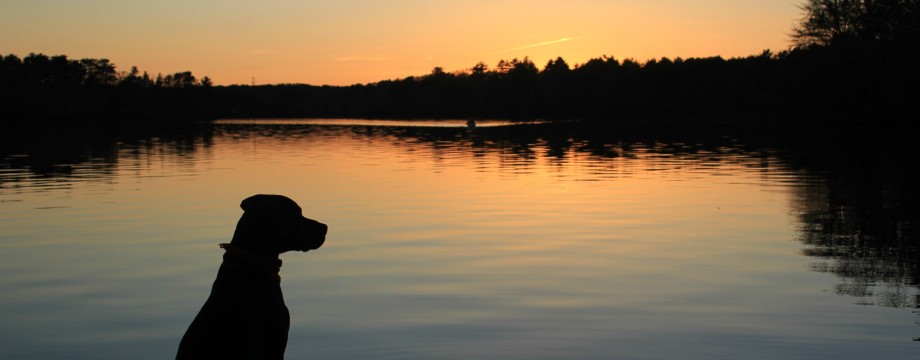
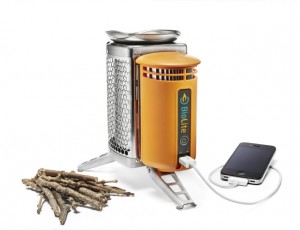
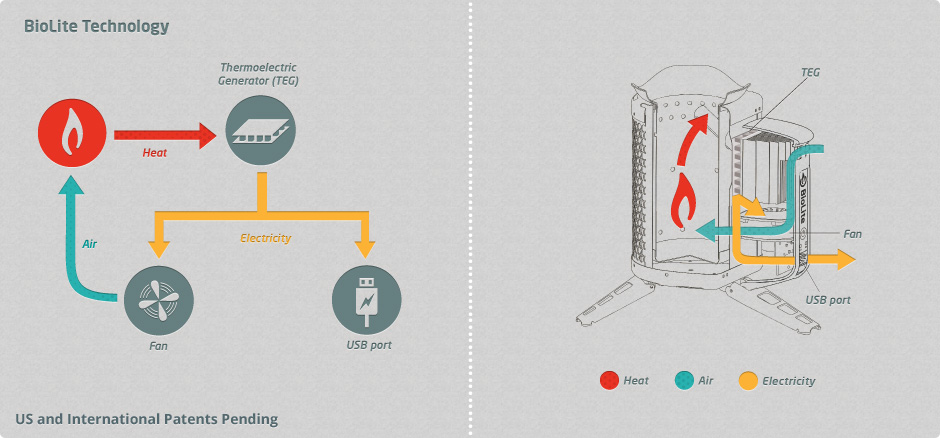

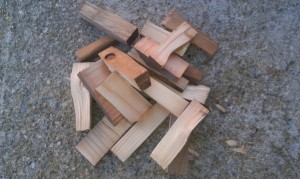
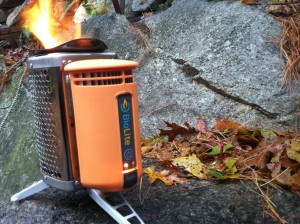
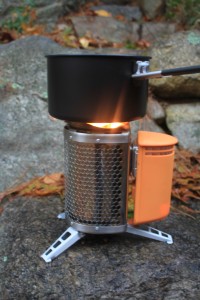
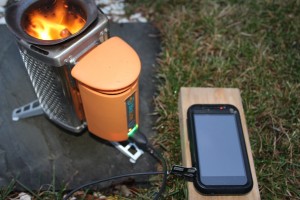
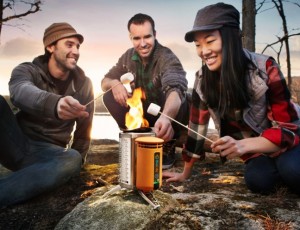

7 Responses to BioLite Camp Stove Review